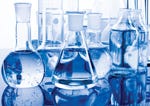April 1, 2011


Consumer demand for cleaner personal care has driven natural manufacturers to remove many controversial chemicals from their products. “Consumers believe cosmetics are safe when they’re free of ingredients they view as ‘bad,’ such as parabens and dyes,” says Betsy Hoag, cofounder of Kairos Consumers, a Chicago-based market research firm. However, whether PC ingredients are truly “bad,” “toxic” or “harmful” isn’t always clear-cut: Many chemicals are just now being thoroughly researched, and the effects of some won’t be known for decades, leaving manufacturers to decide whether to include them in products. Here are four controversial ingredients that savvy shoppers are asking about and that many companies have ousted from products—yet they may still lurk in items on your shelves.
Parabens
The label reads: Butylparaben, propylparaben, methylparaben, ethylparaben, polyparaben, isopropylparaben, isobutylparaben.
The controversy: Parabens fight germs and preserve products but remain in our bodies, mimicking estrogen and perhaps damaging sperm, according to Stacy Malkan, cofounder of the Campaign for Safe Cosmetics, a nonprofit based in
San Francisco. “Some parabens are more potent and problematic than others,” says Sonya Lunder, senior analyst with the Environmental Working Group, a Washington, D.C.-based nonprofit watchdog organization. The above list of parabens ranks them from most to least harmful, according to the EWG’s Skin Deep database, which rates the safety of personal care products.
When a 2004 study discovered parabens in breast cancer tumors, many—but not all—naturals companies sought less risky preservatives. “I don’t understand why some manufacturers still use parabens,” Malkan says. “There are safer, effective preservatives that don’t have toxicity concerns.” She cites salt-based sodium benzoate as one alternative, and says some companies also use airtight packaging that reduces or eliminates the need for preservatives.
Coming clean: Dennis Sepp, founder and chief formulation chemist of Santa Rosa, Calif.-based personal care company Shikai Products, questioned the validity of the 2004 study of cancerous breast tissue because the noncancerous samples also showed presence of parabens. Even so, Shikai eliminated parabens from its entire line two years ago. “After the media picked up on the study linking parabens to breast cancer, we looked into alternative preservatives,” Sepp says. “If we did still use parabens, the products wouldn’t be accepted by the public.”
Bill Pease, chief scientist at GoodGuide, a website and mobile application that rates consumer products’ health, environmental and social impacts, applauds this type of response to public demand. “Unlike mainstream beauty manufacturers, natural personal care companies tend not to debate the scientific merits of consumers’ concerns about ingredients, and they move more quickly to reformulate,” he says.
Sodium laureth sulfate/sodium lauryl sulfate
The label reads: Sodium laureth sulfate, sodium lauryl sulfate, SLES, SLS.
The controversy: Sudsing surfactants sodium laureth sulfate and sodium lauryl sulfate are often confused because of their similar names and acronyms—yet they’re different chemicals. According to Pease, manufacturers put sodium laureth sulfate through an ethoxylation process (to increase its water solubility), which can contaminate it with the carcinogenic byproduct 1,4-dioxane. Although sodium lauryl sulfate does not undergo ethoxylation—and therefore doesn’t carry cancer-causing byproducts—it may irritate or damage skin, according to the Natural Product Association’s Natural Standard.
“Companies wanting to appeal to the green consumer realize there’s confusion between sodium laureth sulfate and sodium lauryl sulfate,” Pease says. “Manufacturers think it’s not worth having an ingredient that could be mistaken for a problematic chemical, so they also reformulate without sodium lauryl sulfate.”
Coming clean: Chatsworth, Calif.-based Nature’s Gate’s reformulated Classics line of shampoos, conditioners, lotions and toothpastes will hit stores this spring, says Brand Manager Jennifer Schweitzer. The company replaced the sodium laureth sulfate in its shampoos with “gentle, sulfate-free, naturally derived surfactants that lather like the previous formula,” Schweitzer says, and swapped sodium lauryl sulfate for a sulfate-free, coconut-derived surfactant in its toothpastes.
Synthetic fragrance
The label reads: Fragrance, perfume, parfum.
The controversy: Synthetic scents may contain phthalates, which are linked to reproductive, endocrine and respiratory issues—and even obesity, Malkan says. But these chemicals never appear on ingredient labels because fragrances have traditionally been trade secrets. “The EWG and the Campaign for Safe Cosmetics have tested fragrances and found complex mixtures of [potentially harmful, unlisted] chemicals,” Lunder says. “Companies need to ask fragrance suppliers to disclose ingredients and then put that info on their labels.”
Coming clean: Recently, some naturals companies have begun specifying “natural fragrance” or “essential oils” so consumers know the products are chemical free. “The smart companies are getting on board now and being transparent about what’s in their fragrances,” Malkan says.
Nanoparticles
The label reads: Manufacturers are not required to list ingredient particle size.
The controversy: Microscopic nanoparticles (100 nanometers or smaller) of chemicals can pass through lungs and enter the bloodstream and organs, Lunder says. Plus, the rate at which the body metabolizes and excretes nanoparticles—if it does at all—can vary. Nanos are most often used in natural sunscreens to make pasty-white zinc oxide and titanium dioxide transparent on skin; they’re also found in mineral makeup.
After reviewing human skin-penetration studies and finding that very little, if any, of either of these nano-sized minerals get into deeper layers of skin, “the EWG gave zinc and titanium dioxide nanoparticles, when used in liquid sunscreens, the green light, because their benefits as sun protection outweigh the risks,” Lunder says. But beware of powdered sunscreen and mineral makeup with nanos, she warns, because the powdery particles can be inhaled into the lungs.
Coming clean: In response to consumer feedback, Gilsum, N.H.-based WS Badger Co. recently reformulated its sunscreens with non-nano zinc instead of a micronized zinc oxide powder, which included a small percentage of particles within the nano-size range. “We are still confident that this micronized zinc oxide is entirely safe—but we also listen to customer concerns,” says Rebecca Hamilton, Badger’s director of product development. The new non-nano formulations hit shelves in March.
About the Author(s)
You May Also Like
.png?width=700&auto=webp&quality=80&disable=upscale)




